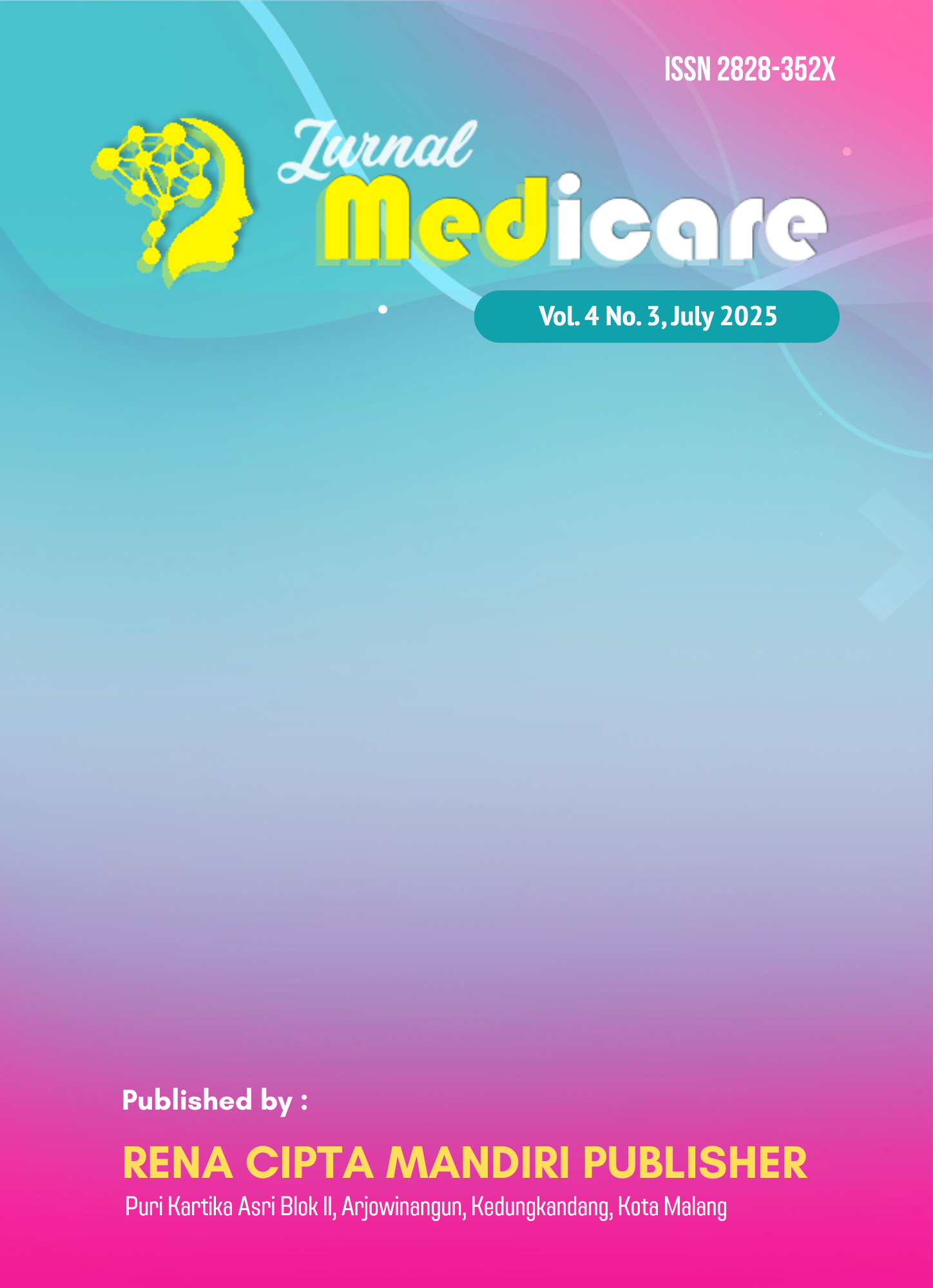PENGARUH PENGETAHUAN KESEHATAN GIZI DENGAN VIDEO ANIMASI TERHADAP PERSEPSI BODY IMAGE REMAJA PUTRI DI KELAS 2 SMP NEGERI 3 KABUPATEN BIREUEN
DOI:
https://doi.org/10.62354/jurnalmedicare.v4i3.243Keywords:
nutritional health, knowledge, body imageAbstract
Body image is commonly experienced by teenagers, with a prevalence reaching 71%. In Ireland, 26% of teenagers report feeling dissatisfied or very dissatisfied with their bodies, or having a negative body image. This issue is more prevalent among female adolescents compared to males. This study aims to examine the effect of nutritional health education using animated videos on the body image perception of female adolescents in Class 2 at SMP Negeri 3 Bireuen District. The research design used is a pre-experimental design with a one-group pretest-posttest approach. The study population consists of all female adolescents in Class 2 at SMP Negeri 3 Bireuen, with the sampling technique employing the total population, totaling 34 respondents. The Wilcoxon test results show that 91.2% of respondents had good knowledge (α = 0.05), with a p-value (0.000) < α (0.05), meaning that Ha is accepted and Ho is rejected. The study concludes that there is a significant effect of nutritional health education using animated videos on the body image perception of female adolescents. This research is expected to encourage respondents to actively participate in improving positive body image perception among female adolescents.
Downloads
References
Amraini, A. (2020). Hubungan Citra Tubuh, Pengetahuan Gizi dan Perilaku Makan terhadap Status Gizi Remaja di SMA Negeri 5 Kota Metro. https://scholar.google.com/scholar.
BPS Indonesia (2020). Sensus Penduduk 2020. Badan Pusat Statistik Indonesia. https://sensus.bps.go.id/main/index/sp2020.
Fauzia, T. F. (2019). Memahami pengalaman body shaming pada remaja perempuan. https://scholar.google.com/scholar.
Islamiyati, S. N. (2023). Hubungan Rasa Syukur Dan Kepercayaan Diri Dengan Body Image Mahasiswa Pengguna Media Sosial Instagram https://scholar.google.com/scholar.
Iman. M. (2016). Panduan Penyusunan Karya Tulis Ilmiah Bidan Kesehatan. Medan: Cita Pusaka
Kemenkes RI (2018). Data remaja Indonesia https://ayosehat.kemkes.go.id/kategori-usia/remaja.
Kissya, T. A. (2024). Faktor Penyebab Body Shaming Pada Remaja Perempuan: Scoping Review. https://scholar.google.com/scholar.
Lestari, P. I. (2021). Pengaruh Penyuluhan Gizi Melalui Media Animasi Dan Leaflet Terhadap Pengetahuan Dan Sikap Tentang Makanan Cepat Saji Pada Remaja Di Desa Binjai https://scholar.google.com/scholar.
Miratunnisa, M. (2023). Efektivitas Pendidikan Gizi Melalui Media Video Dan Motion Graphic Terhadap Perubahan Pengetahuan Dan Sikap Gizi Mengenai Obesitas Pada Remaja Di Mts Darul Ihsan. https://scholar.google.com/scholar.
Nasyiba, O. W. (2023). Pengaruh Edukasi Gizi dengan Media Komik dan Video Animasi terhadap Tingkat Pengetahuan tentang Obesitas pada Siswa SMA Negeri 98 Jakarta. https://scholar.google.com/scholar.
Putri, N. A. (2022). Pengaruh pendidikan gizi dengan video animasi terhadap persepsi body image remaja di SMK Al-Muhadjirin 2 Kesehatan Bekasi Timur tahun 2022. https://scholar.google.com/scholar.
Putri, M. P. (2022). Asupan protein, ZAT besi dan status gizi remaja putri. https://scholar.google.com/scholar.
Muri Yusuf. (2016). Metode Penelitian Kuantitatif, Kualitatif, & Penelitian Gabungan. Jakarta: Prenada Media.
Ramanda, R. (2019). Studi kepustakaan mengenai landasan teori body image bagi perkembangan remaja. https://scholar.google.com/scholar.
_________(2014). Pemanfaatan SPSS Dalam Penelitian Bidang Kesehatan & Umum. Medan: Cita Pusaka
Downloads
Published
How to Cite
Issue
Section
License
Copyright (c) 2025 Jurnal Medicare

This work is licensed under a Creative Commons Attribution-ShareAlike 4.0 International License.
Licensing for Data Publication
-
Open Data Commons Attribution License, http://www.opendatacommons.org/licenses/by/1.0/ (default)
-
Creative Commons CC-Zero Waiver, http://creativecommons.org/publicdomain/zero/1.0/
-
Open Data Commons Public Domain Dedication and Licence, http://www.opendatacommons.org/licenses/pddl/1-0/















